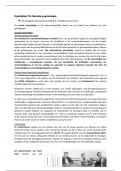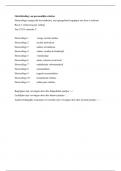Summary
Summary Trochim - Research methods: the essential knowledge base (Chapter 1 t/m 12) + lecture and seminar notes. Grade 7,5
- Course
- Institution
Summary of all 12 chapters, combined with lecture an seminar notes. Attended all lectures, so lot of extra information in order to be well prepared for the final exam.
[Show more]












